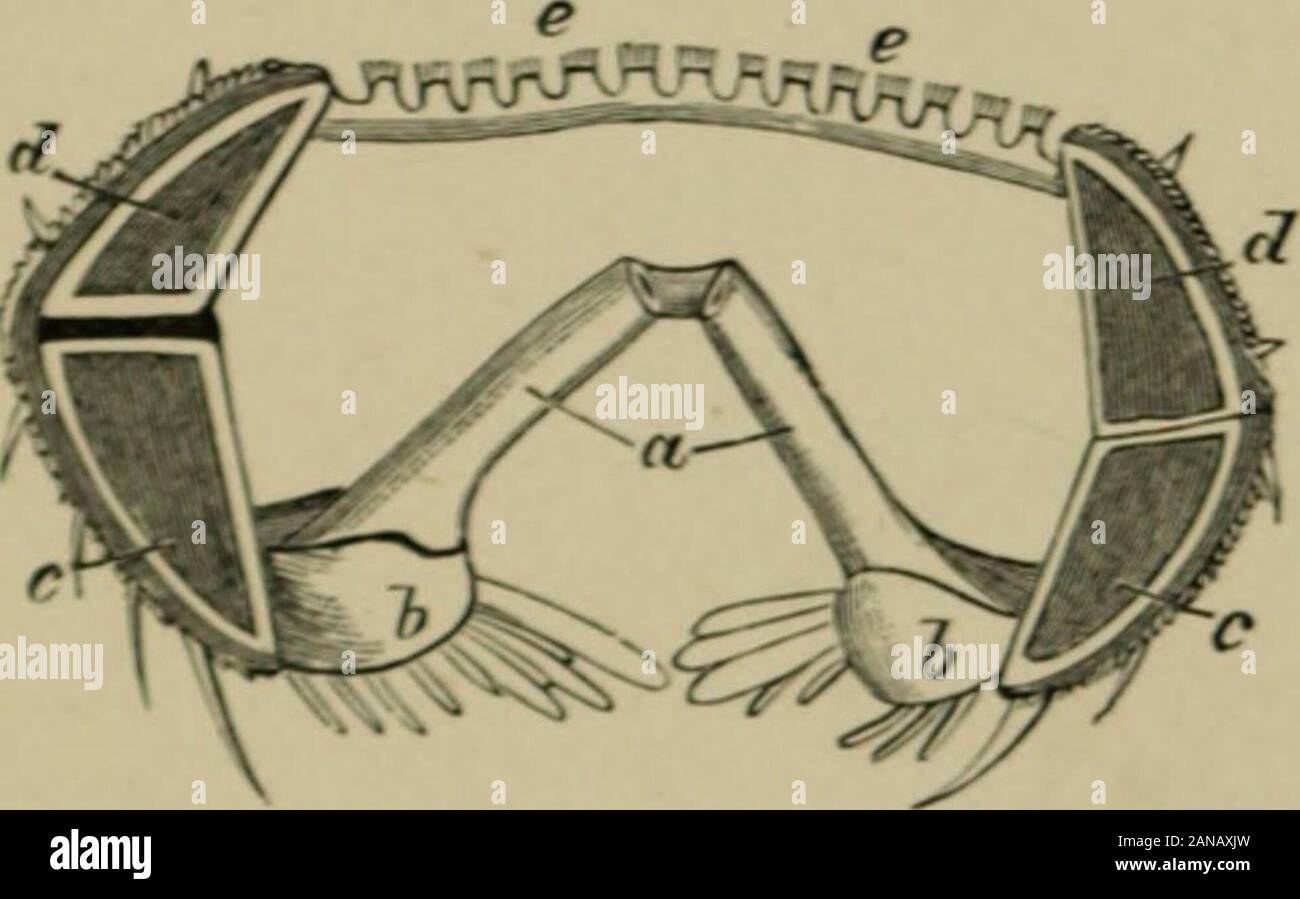A treatise on zoology . )lates ofwhich are the basals; the central j)late next develops in thecentre of this ring; the radial circle follows, and after that comethe infra-basals. Between the plates of the last set and thecentral sf)mc genera have additional plates, which cannot behomologised with any in Crinoids. The Oral Skeleton consists of a ring of plates round the mouth.The ring is composed of as many segments as the starfish has rays,and each segment is intorradial, and forms an oral ancle; itconsi.its of two sets of plate-*, nsually three in number.. Fin. VI1. THE STELLEROIDEA 247 The o

Image details
Contributor:
The Reading Room / Alamy Stock PhotoImage ID:
2ANAXJWFile size:
7.2 MB (175.9 KB Compressed download)Releases:
Model - no | Property - noDo I need a release?Dimensions:
2003 x 1248 px | 33.9 x 21.1 cm | 13.4 x 8.3 inches | 150dpiMore information:
This image is a public domain image, which means either that copyright has expired in the image or the copyright holder has waived their copyright. Alamy charges you a fee for access to the high resolution copy of the image.
This image could have imperfections as it’s either historical or reportage.
A treatise on zoology . )lates ofwhich are the basals; the central j)late next develops in thecentre of this ring; the radial circle follows, and after that comethe infra-basals. Between the plates of the last set and thecentral sf)mc genera have additional plates, which cannot behomologised with any in Crinoids. The Oral Skeleton consists of a ring of plates round the mouth.The ring is composed of as many segments as the starfish has rays, and each segment is intorradial, and forms an oral ancle; itconsi.its of two sets of plate-*, nsually three in number.. Fin. VI1. THE STELLEROIDEA 247 The oral skeleton is described as either amlmlacral or adam-bulacral, according as the anibnlacral or adanibulacral platesare the more j)rominent. iguier, in his important memoir onthe skeleton of the Asteroids, pointed ont the existence of thesetwo types, and based his classification upon this character. As wehave seen, in the genus Asterias the oral skeleton consists of asolid ring, in which the ambulacral plates form five prominences, while the adanibulacral ])lates are small, and occur in the anglesbetween them. Such a mouth-structure is descriVied by Viguier asambulacral. In Pentaceros (Oreaster), on the other hand, theambulacral })lates are inconspicuous, and the adambulacral platesproject into the buccal cavity and form the jaws. This type isViguiers adambulacral mouth. In both cases above the adam-bulacral plates is a basal, interbrachial, or oral plate which iscalled by Viguier the odontophore, although it does not bear theteeth ; its value is o